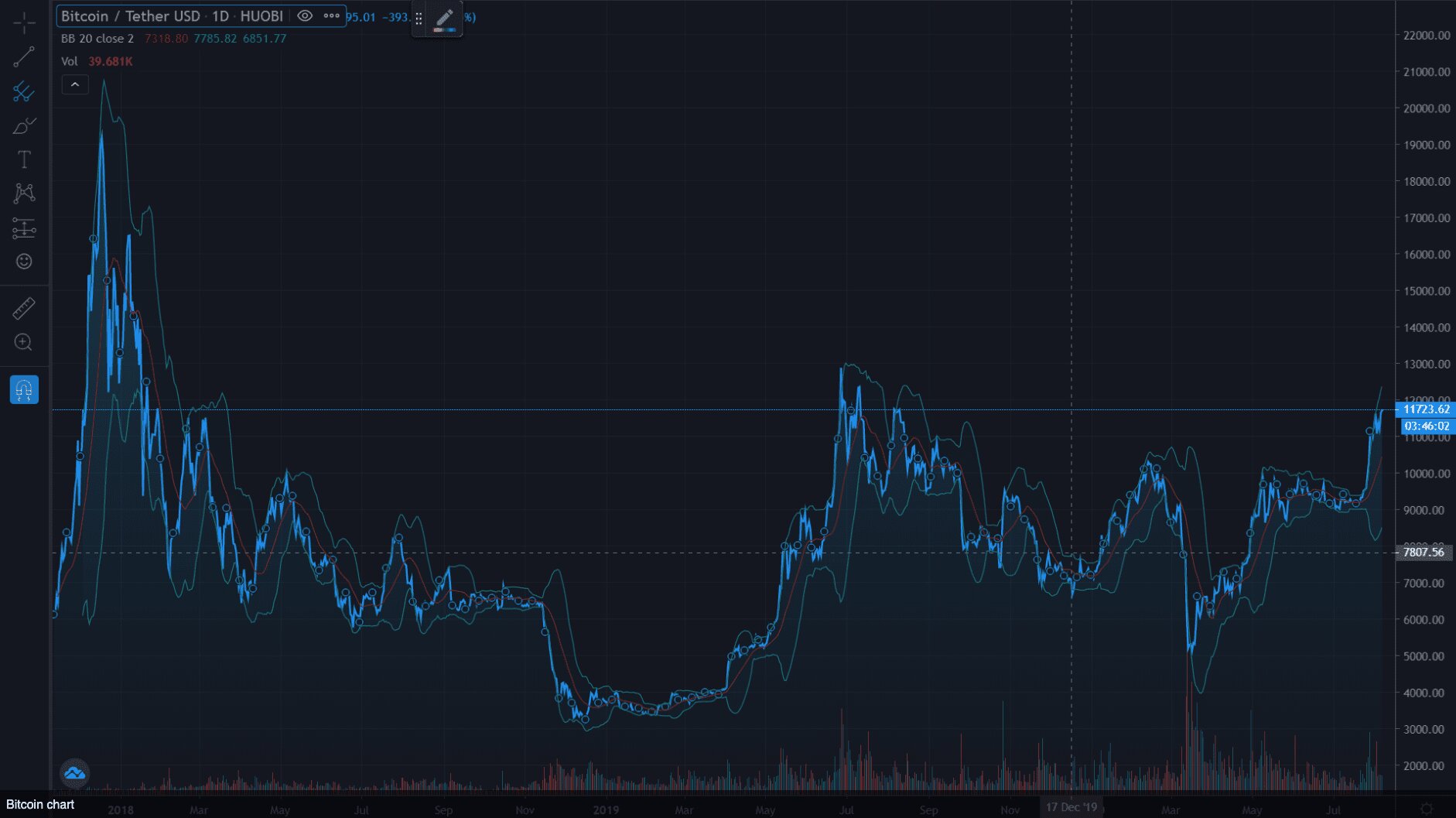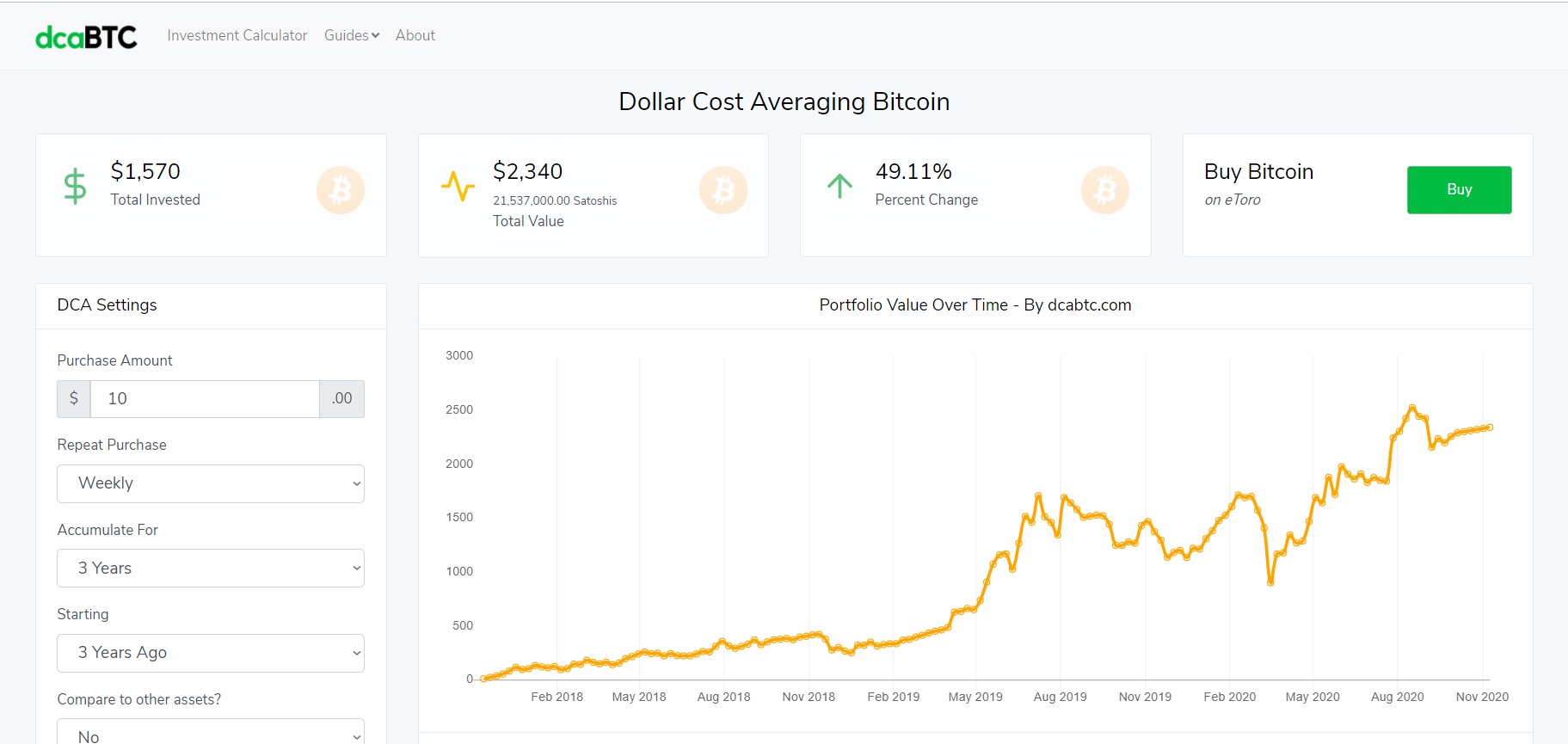Introduction
With the rise of cryptocurrencies in recent years, investors have been exploring new and innovative ways to profit from the volatile market. One such strategy is known as “shorting” crypto. Whether you’re a seasoned trader or new to the world of digital currencies, understanding what it means to short crypto is essential.
Shorting is a trading technique that allows investors to profit from a decline in the price of a particular asset. Traditionally used in the stock market, this strategy has been adopted by the cryptocurrency space, offering opportunities for traders to make profits even in a bearish market.
But what exactly does it mean to short crypto? In simple terms, it involves borrowing a cryptocurrency, selling it at the current market price, and then buying it back at a lower price to return the borrowed amount. The difference between the selling and buying prices is the profit made.
Shorting crypto can be an attractive option for investors who believe that the value of a cryptocurrency will decrease in the future. It can provide a way to mitigate losses or even make gains during market downturns. However, it is not without its risks and complexities.
In this article, we will delve deeper into the concept of shorting crypto, discuss the mechanics behind it, and explore the potential risks and benefits that come with this trading strategy. We will also provide step-by-step instructions on how to short crypto and share some popular platforms where you can engage in short selling.
Whether you’re a seasoned trader looking for new opportunities or a curious newcomer to the world of cryptocurrencies, this guide will help you gain a better understanding of what it means to short crypto and how to navigate this strategy effectively.
Understanding Shorting in Cryptocurrency
Before diving into the mechanics of shorting crypto, it’s important to grasp the underlying concept and how it differs from traditional investing. When you buy a cryptocurrency with the expectation that its value will increase over time, you’re engaging in a long position. Shorting, on the other hand, involves betting on the price of a cryptocurrency to decline.
The process of shorting crypto is made possible through borrowing. To short a cryptocurrency, you need to find someone who is willing to lend you the asset. Once you’ve borrowed the cryptocurrency, you can sell it on the open market at the current price. The goal is to buy back the cryptocurrency at a lower price in the future and return it to the lender. The difference between the selling price and the buying price is your profit.
Shorting crypto can be seen as a way to trade in the opposite direction of the prevailing market sentiment. While traditional investing focuses on buying low and selling high, shorting allows investors to make a profit by selling high and buying low. This enables traders to potentially profit from market downturns and volatility.
It’s important to note that shorting crypto is not without risks. When you take a short position, your potential losses are theoretically unlimited. Unlike buying a cryptocurrency, where the maximum loss is limited to the amount invested, shorting can result in significant losses if the price of the cryptocurrency increases rather than decreases.
Moreover, shorting crypto requires a thorough understanding of market trends, analysis, and risk management. It is not a strategy that should be taken lightly, and it is recommended that individuals have a solid grasp of technical analysis and market dynamics before attempting to short cryptocurrencies.
Understanding the concept of shorting in cryptocurrency is crucial for investors who want to explore alternative strategies and potentially profit from market downturns. In the following sections, we will delve deeper into the mechanics of shorting crypto, the associated risks and benefits, and the step-by-step process to engage in short selling.
How Does Shorting Crypto Work?
Shorting cryptocurrencies involves a series of steps that allow investors to profit from the declining price of a specific digital asset. The process may vary slightly depending on the platform or exchange you use, but the general mechanics remain consistent.
Here’s a breakdown of how shorting crypto typically works:
- Find a Borrower: Before you can short a cryptocurrency, you need to find a lender who is willing to lend you the cryptocurrency you wish to short. This is usually facilitated through lending platforms or exchanges that offer margin trading options.
- Borrow the Cryptocurrency: Once you’ve found a lender, you can borrow the desired amount of the cryptocurrency. The borrowed cryptocurrency is typically held as collateral during the lending period.
- Sell the Cryptocurrency: After borrowing the cryptocurrency, you can sell it on the open market at the current market price. This initiates your short position, as you are now holding a negative balance of the borrowed cryptocurrency.
- Monitor the Market: As a short seller, it’s crucial to closely monitor the market and track the price movements of the cryptocurrency you’ve shorted. The goal is to buy back the cryptocurrency at a lower price to profit from the price difference.
- Close the Short Position: Once you believe the price of the cryptocurrency has dropped to your desired level, you can close your short position by buying back the same amount of cryptocurrency you initially sold. This process is known as covering your short position.
- Return the Borrowed Cryptocurrency: After buying back the cryptocurrency, you must return the same amount of cryptocurrency to the lender. This completes the transaction, and you are no longer holding a short position.
- Calculate Profits or Losses: Finally, you can calculate your profits or losses by comparing the initial selling price of the cryptocurrency and the price at which you covered your short position. If the price has dropped, you will make a profit. However, if the price has increased, you will experience a loss.
It’s essential to note that the process of shorting crypto can be complex and involves certain risks. It requires careful analysis of market trends, understanding of technical indicators, and effective risk management. Additionally, margin requirements, borrowing fees, and interest rates may vary depending on the platform or exchange you use.
Now that we have a clear understanding of how shorting crypto works, let’s explore the potential risks and benefits associated with this trading strategy in the next section.
Risks and Benefits of Shorting Crypto
Shorting cryptocurrency can offer potential rewards, but it also comes with considerable risks. Understanding the risks and benefits is vital before deciding to engage in short selling. Here are some of the key factors to consider:
Risks:
- Unlimited Losses: One of the primary risks of shorting crypto is the potential for unlimited losses. Unlike buying a cryptocurrency, where the maximum loss is limited to the amount invested, shorting exposes traders to large losses if the price of the cryptocurrency continues to rise.
- Market Volatility: Cryptocurrency markets are known for their volatility, which can increase the risk of shorting. Rapid price movements can result in significant losses or unexpected gains, making it crucial to closely monitor the market and implement effective risk management strategies.
- Margin Calls: When shorting on margin, your position may be subject to margin calls. A margin call occurs when the value of the collateral supporting your short position falls below a certain threshold determined by the lending platform or exchange. If this happens, you may be required to add more funds or close your position, potentially resulting in losses.
- Limited Availability: Not all cryptocurrencies are available for shorting, as the option may be offered only for select coins on specific platforms. This limited availability can restrict your ability to engage in short selling for certain cryptocurrencies.
Benefits:
- Profit in Downward Markets: The primary benefit of short selling is the ability to profit from falling prices. Shorting crypto allows investors to potentially make gains during market downturns, offering a valuable strategy to hedge against losses or even generate profits in bearish conditions.
- Diversification: Shorting crypto provides an additional option for diversifying your investment portfolio. By incorporating both long and short positions, you can mitigate risks and balance your exposure to different market conditions.
- Advanced Trading Opportunities: Shorting crypto requires a deeper understanding of market dynamics, technical analysis, and risk management. Engaging in short selling can provide advanced trading opportunities for experienced investors who are looking to explore alternative strategies and take advantage of market volatility.
It’s important to weigh the risks against the benefits and consider your risk tolerance, market analysis skills, and overall investment strategy before engaging in shorting crypto. Having a clear understanding of these factors will help you make informed decisions and manage your short positions effectively.
In the next section, we will outline the step-by-step process of shorting crypto, guiding you through the necessary actions to engage in short selling.
Steps to Short Crypto
Shorting crypto involves a series of steps that traders need to follow in order to take a short position on a particular digital asset. While the specific process can vary depending on the platform or exchange you use, the following steps provide a general outline:
- Choose a Platform: Select a reputable cryptocurrency exchange or trading platform that offers short selling functionality. Ensure that the platform supports the specific cryptocurrency you wish to short.
- Create an Account: Sign up for an account on the chosen platform. Complete the registration process, including any necessary identity verification requirements.
- Deposit Funds: Deposit funds into your trading account. This will provide the necessary capital to enter into short positions. Ensure that you have sufficient funds to cover any potential losses or margin requirements.
- Research and Select a Cryptocurrency: Conduct thorough research and analysis to identify the cryptocurrency you want to short. Consider market trends, historical performance, and any current factors that may impact the price of the asset.
- Enable Margin Trading: If margin trading is not already enabled on your account, navigate to the settings or account preferences and enable this feature. Margin trading allows you to borrow funds or cryptocurrencies to increase your buying power.
- Borrow the Cryptocurrency: Locate the option to borrow or lend cryptocurrencies on the platform. Specify the amount of the cryptocurrency you wish to borrow and complete the borrowing process.
- Sell the Cryptocurrency: Once you’ve successfully borrowed the cryptocurrency, proceed to the trading section of the platform. Place a sell order for the borrowed cryptocurrency at the current market price. This initiates your short position.
- Monitor and Manage Your Position: Keep a close eye on the market and monitor the price movements of the cryptocurrency you have shorted. Implement effective risk management strategies, such as setting stop-loss orders or trailing stops, to protect your position.
- Close Your Short Position: When you believe the price of the cryptocurrency has dropped to your desired level or when you want to limit your potential losses, you can close your short position. Place a buy order for the same amount of cryptocurrency you initially sold to cover your short position.
- Return the Borrowed Cryptocurrency: After covering your short position, return the borrowed cryptocurrency to the lender. The platform will typically handle the process of returning the cryptocurrency on your behalf.
- Calculate Your Profits or Losses: Assess the outcome of your short position by calculating the difference between the initial selling price and the buying price when you covered your short position. This will determine your profits or losses from the trade.
Remember that each platform may have its own specific features and requirements, so it’s essential to familiarize yourself with the platform’s terms, fees, margin requirements, and available tools for short selling.
Now that you understand the steps involved in shorting crypto, let’s explore some popular platforms that offer short selling options in the next section.
Popular Platforms for Shorting Crypto
As the popularity of cryptocurrencies continues to grow, so does the number of platforms and exchanges that offer the option to short crypto. These platforms provide traders with the infrastructure and tools necessary to engage in short selling. Here are some popular platforms that offer shorting crypto:
- BitMEX: BitMEX is a widely used cryptocurrency exchange known for its advanced trading features and high liquidity. It offers up to 100x leverage for margin trading, enabling traders to take significant short positions on various cryptocurrencies.
- Binance Futures: Binance, one of the largest cryptocurrency exchanges globally, has a dedicated futures platform called Binance Futures. This platform allows users to trade cryptocurrency futures contracts with leverage, including the ability to short various cryptocurrencies.
- Kraken: Kraken, a well-established cryptocurrency exchange, offers margin trading options for a range of digital assets. Traders can take short positions on cryptocurrencies with leverage, allowing them to amplify potential gains or losses.
- Bitfinex: Bitfinex is a reputable cryptocurrency exchange offering a range of trading options, including margin trading. It provides traders with the ability to short various cryptocurrencies using leverage, making it a popular choice for those looking to engage in short selling.
- Deribit: Deribit is a cryptocurrency options and futures trading platform that primarily focuses on Bitcoin and Ethereum. Traders can take short positions on these cryptocurrencies using leverage, allowing for potential profits in a declining market.
These platforms are well-known in the cryptocurrency community and offer features that cater to both experienced traders and beginners. However, it’s crucial to conduct your own research, consider factors such as security, fees, available trading pairs, and user interface, and choose a platform that aligns with your specific trading needs.
Furthermore, it’s worth mentioning that regulations and availability of short selling may vary depending on your country of residence. Be sure to comply with the legal requirements and regulations in your jurisdiction before engaging in short selling activities.
In the next section, we will provide some tips for successful shorting to help you navigate the complexities of this trading strategy.
Tips for Successful Shorting
Shorting crypto requires a strategic approach and careful consideration of market trends and risk management. To increase your chances of success when engaging in short selling, consider the following tips:
- Thorough Market Analysis: Before shorting a cryptocurrency, conduct extensive research and analysis. Consider factors such as market trends, news, and technical indicators to make informed decisions about your short positions.
- Use Stop-Loss Orders: Implementing stop-loss orders is crucial to protect yourself from significant losses. Set a stop-loss order at a price level that you are comfortable with, ensuring that if the price moves against your short position, the order will automatically close it to limit your losses.
- Maintain Proper Risk Management: Have a clear risk management strategy in place. Determine the maximum amount you are willing to risk on each short position and stick to it. Avoid putting all your capital into a single short position, as this can amplify potential losses.
- Stay Informed: Monitor the market regularly and stay updated on news and developments that can impact the price of the cryptocurrency you have shorted. Stay informed about regulatory changes, partnerships, or any announcements that could significantly affect the market sentiment.
- Beware of Margin Calls: Understand the margin requirements and potential for margin calls on the platform you are using. Ensure that you have enough collateral to cover potential margin calls, as failing to do so can lead to the automatic closure of your short position and potential losses.
- Manage Leverage: If using leverage, be cautious and consider your risk tolerance. While leverage can amplify potential profits, it also increases the risk of significant losses. Use leverage wisely and ensure that you have a solid understanding of its implications.
- Practice and Learn: Before diving into shorting crypto with real money, consider using a demo account or paper trading to practice your strategies and gain experience. This will help you understand the dynamics of short selling and refine your approach without the risk of losing capital.
Remember that shorting crypto involves substantial risks, and success is not guaranteed. It’s imperative to keep emotions in check, avoid impulsive decisions, and stick to your trading plan. Continually reassess and adjust your approach based on market conditions and your own experience.
Armed with these tips and a solid understanding of shorting crypto, you can navigate the complexities of this trading strategy and potentially benefit from market downturns.
In the final section, we will explore alternative strategies for those who are not comfortable with shorting crypto.
Alternatives to Shorting Crypto
Shorting crypto comes with its own set of risks and complexities. If you’re not comfortable with the prospect of potentially unlimited losses or the technical analysis required, there are alternative strategies to consider when it comes to managing your cryptocurrency investments. Here are a few alternatives to shorting crypto:
1. Hedging:
Hedging involves taking positions in assets that have an inverse correlation to the cryptocurrency you hold. For example, you could consider investing in stablecoins or traditional safe-haven assets like gold or government bonds. By diversifying your portfolio with these assets, you can potentially offset losses from a declining cryptocurrency with gains from your hedge investments.
2. Dollar-Cost Averaging (DCA):
Dollar-cost averaging involves investing a fixed amount at regular intervals, regardless of the price of the cryptocurrency. This strategy allows you to accumulate positions over time, potentially reducing the impact of market volatility. While it doesn’t directly profit from a declining market, it can help mitigate the risk of short-term price fluctuations.
3. Long-Term Investing:
Instead of trying to time the market and profit from short-term price movements, you can adopt a long-term investment strategy. By identifying cryptocurrencies with strong fundamentals and long-term growth potential, you can hold onto your investments and ride out market fluctuations. This approach requires patience and a belief in the long-term viability of the cryptocurrency market.
4. Dollar-Pegged Stablecoins:
If you’re concerned about market volatility but still want exposure to the cryptocurrency space, you can consider investing in dollar-pegged stablecoins. Stablecoins, such as Tether (USDT) or USD Coin (USDC), are cryptocurrencies designed to maintain a stable value relative to a specific currency, often the US dollar. By holding stablecoins, you can avoid the price volatility of other cryptocurrencies.
It’s important to note that each alternative strategy has its own considerations and risks. Conduct thorough research and assess which approach aligns best with your investment goals and risk tolerance.
Remember, there is no one-size-fits-all solution, and the choice of strategy will depend on your individual circumstances and objectives. It’s always advisable to consult with a financial advisor or do your own research before deciding on the best alternative to shorting crypto for your particular situation.
Now that we have explored alternatives to shorting crypto, let’s wrap up this guide with a summary of the key points discussed.
Conclusion
In this comprehensive guide, we have explored the concept of shorting crypto and its intricacies. Shorting provides an opportunity for traders to profit from declining cryptocurrency prices, but it’s important to understand the risks involved.
By borrowing and selling cryptocurrencies with the expectation of buying them back at a lower price, traders can potentially profit from market downturns. However, shorting crypto comes with unlimited loss potential, market volatility, and margin call risks.
We discussed the step-by-step process of shorting crypto, highlighting the importance of thorough market analysis, risk management, and understanding margin requirements. Additionally, we also explored popular platforms that offer short selling options.
To increase the chances of success, we provided essential tips such as conducting thorough market analysis, implementing stop-loss orders, maintaining proper risk management, staying informed, being mindful of margin calls, managing leverage, and practicing trading strategies with demo accounts.
For those who are not comfortable with shorting crypto, we explored alternatives such as hedging, dollar-cost averaging, long-term investing, and investing in dollar-pegged stablecoins. Each alternative strategy offers a unique approach to managing cryptocurrency investments in volatile markets.
Ultimately, successful trading and investing in cryptocurrencies require careful research, risk assessment, and discipline. It is vital to stay informed, stay updated on market trends, and continually evaluate and adjust your strategies based on market conditions and personal experience.
Remember, this guide serves as a starting point for understanding shorting crypto, but there is always more to learn and explore. Whether you choose to engage in shorting or pursue alternative strategies, make sure to approach the cryptocurrency market with caution and a clear understanding of the risks involved.
Now, armed with the knowledge gained from this guide, you can confidently navigate the world of shorting crypto and make informed decisions to suit your investment goals and risk appetite.

























